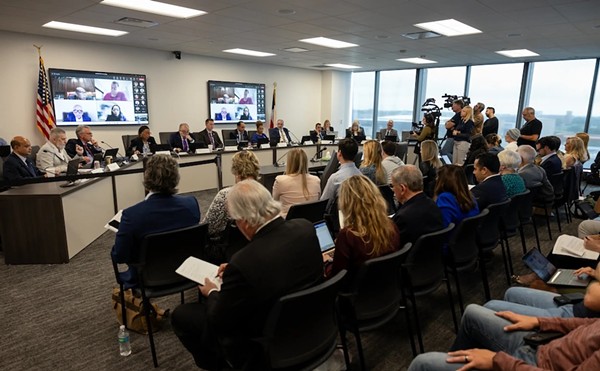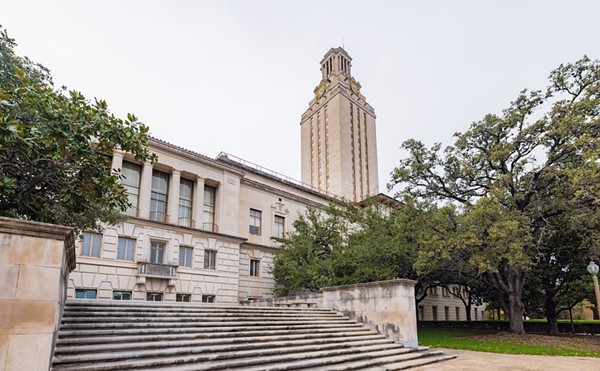HHS’s Teen Pregnancy Prevention Program was supposed to last five years, but last summer the agency announced it would end on June 30, 2018 — two years early. So, with outside legal help, Healthy Futures filed a class-action suit on behalf of itself and 61 other groups with grants from HHS.
“HHS didn’t consider their own rules, which say they can’t end the program like that,” said Evelyn Delgado, Healthy Futures’ president and CEO.
Earlier this month, a judge agreed.
Judge Ketanji Brown Jackson of the U.S. District Court for the District of Columbia ruled HHS acted illegally and required it to keep the funding in place. Her June 1 ruling was another significant setback to the administration’s agenda of favoring pro-abstinence polices over evidence-based programs that provide a more holistic approach to curbing teen pregnancies.
“The evidence has shown abstinence-only education doesn’t work,” said Delgado, whose nonprofit offers educational services in more than 20 school districts and to at-risk youth in facilities like Haven for Hope. “The reality is many youths are already sexually active when we reach them in high school, or even junior high.”
Healthy Futures’ flagship program, Big Decisions, is an abstinence-plus program, meaning it teaches teens that abstinence is the only 100-percent effective way to avoid pregnancy and STDs. However, it provides info on safe sex just in case. And, in doing so, it also teaches kids about the importance of consent and how to avoid unhealthy relationships.
Without the $900,000-a-year HHS grant, the organization stood to lose a significant chunk of its $2.3 million annual budget. That would have meant tough cutbacks, including layoffs for some of its 14 staffers.
But, most significantly, it would have cratered a five-year study of Big Decisions’ effect on teen pregnancy rates in three South Texas communities. Completing that research is key to bringing the program to even more schools, many of which are required to use evidence-based programs in their curriculum.
“Big Decisions is our primary source of revenues,” Delgado said. “It really is the way we sustain our other work.”
Jackson’s ruling against HHS wasn’t entirely unexpected. In April, the judge also sided against the funding cut in a separate suit filed by groups in North and South Carolina.
The Healthy Futures decision is the fifth district court ruling against the Trump Administration on its decision to gut the program. As a result, almost all of the 84 HHS grant recipients will have their funding restored, according to press reports.
Earlier this year, HHS announced new rules for funding pregnancy prevention programs, saying it would favor those promoting abstinence while downplaying the need for proof to show those programs’ effectiveness. Past Republican presidents have pushed an abstinence-only focus on HHS, but the Trump Administration’s decision to kill a program in the middle of its life cycle was unprecedented, observers said.
HHS declined an interview, but a spokeswoman did email a statement about the Healthy Futures case.
“We are disappointed with this ruling,” spokeswoman Caitlin Oakley wrote. “As numerous studies have shown, the Teen Pregnancy Prevention Program is not working. Continuing the program in its current state does a disservice to the youth it serves and to the taxpayers who fund it. Communities deserve better, and we are considering our next steps.”
Despite HHS’s claim that the program isn’t working, teen pregnancy numbers in San Antonio suggest Healthy Futures’ work here is having an impact.
The teen birthrate in San Antonio dropped by 53 percent between 2006 and 2016, according to the San Antonio Metropolitan Health District. Even so, birthrates among teens 15-19 are still 49 percent higher than the U.S. teen birthrate.
At least some of that success comes down to Healthy Futures, said Jennifer Herriott, Metro Health’s assistant director of community health. The group’s founder, Dr. Janet Realini, has been an effective advocate on teen pregnancy issues, Herriott added, and the group works well in concert with Metro Health and other local groups such as UT Teen Health, which also had its HHS funding saved by the recent ruling.
“It’s a huge victory to know that we’re going to be able to continue implementing these evidence-based programs in San Antonio,” Herriott said. “It was great to see Healthy Futures step forward and make sure that could happen.”
Stay on top of San Antonio news and views. Sign up for our Weekly Headlines Newsletter.





















